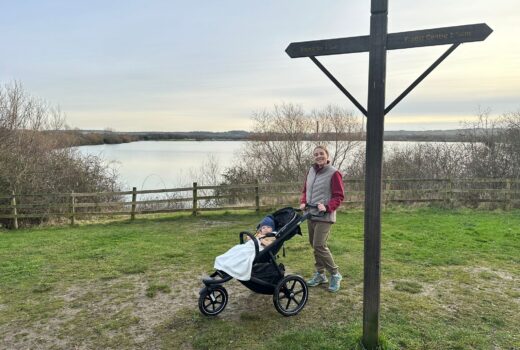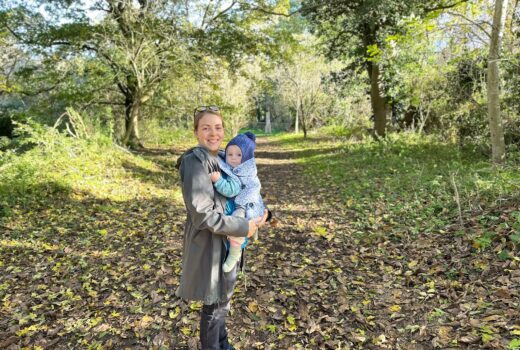It’s no secret that I’ve struggled with quite a few niggles since I started running five years ago. From shin splints as an enthusiastic beginner, to hip pain, ITB problems and my latest knee issues, I don’t seem to have managed to train for any of my races without picking up some sort of injury!
So when I got an email about the new DorsaVi ViMove2 sensors, which analyse your running technique to help with injury prevention, rehabilitation and performance enhancement I was definitely interested. Anything that can help me enjoy running and avoid unnecessary discomfort has to be a good thing!
I headed down to Hemel Running Clinic for my personalised running assessment with the lovely Gemma, and we got to work…
DorsaVi ViMove2
The DorsaVi ViMove2 devices are two small rectangular sensors which attach to your shins with sticky pads – they can then measure different variables as you are running, whether outside or on a treadmill.
For my assessment, I ran on the treadmill at the clinic, but Gemma said it would be possible to try the assessment outside another time to compare the results. It was a pretty hot day and the sticky pads did struggle a bit with the warm temperatures (and my sweaty shins!) and the sensors fell off a couple of times.
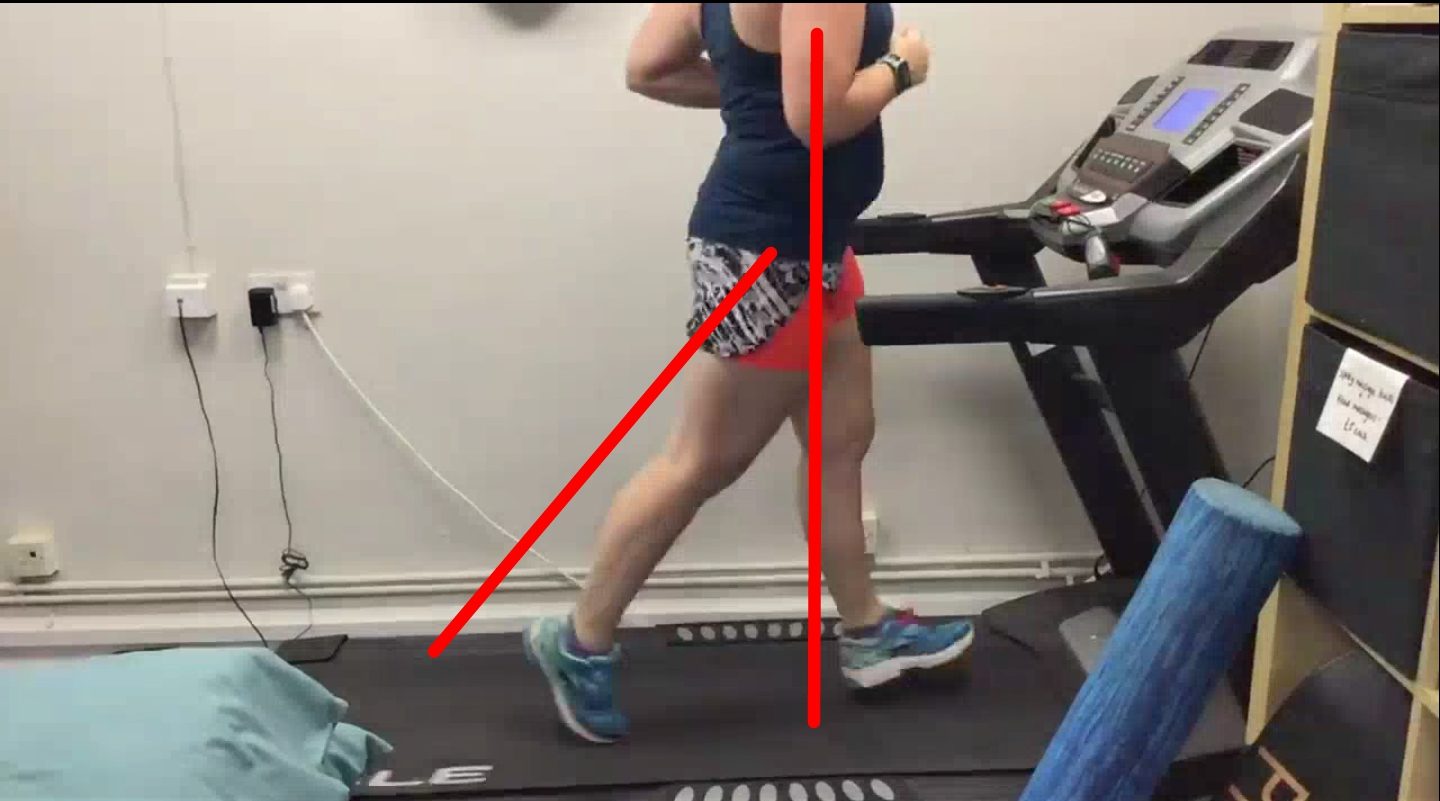
I found the whole assessment really interesting though and it identified a couple of things for me to look at – the great thing about the DorsaVi setup is that all your results get saved on your profile on the app, along with any exercises you’ve been assigned so you can check everything at a later date. Unfortunately the app is only currently available on iPhone which is a bit of a letdown, but Gemma sent me all of my stats as well.
The below image shows an overview of the two most interesting runs we recorded – my ‘normal’ running and one without shoes at the bottom. Gemma recorded quite a few samples to get a baseline, as well as asking me to try different things to see what changes it made to the stats (e.g. run as if you’re trying to keep a significant gap between your knees at all times).
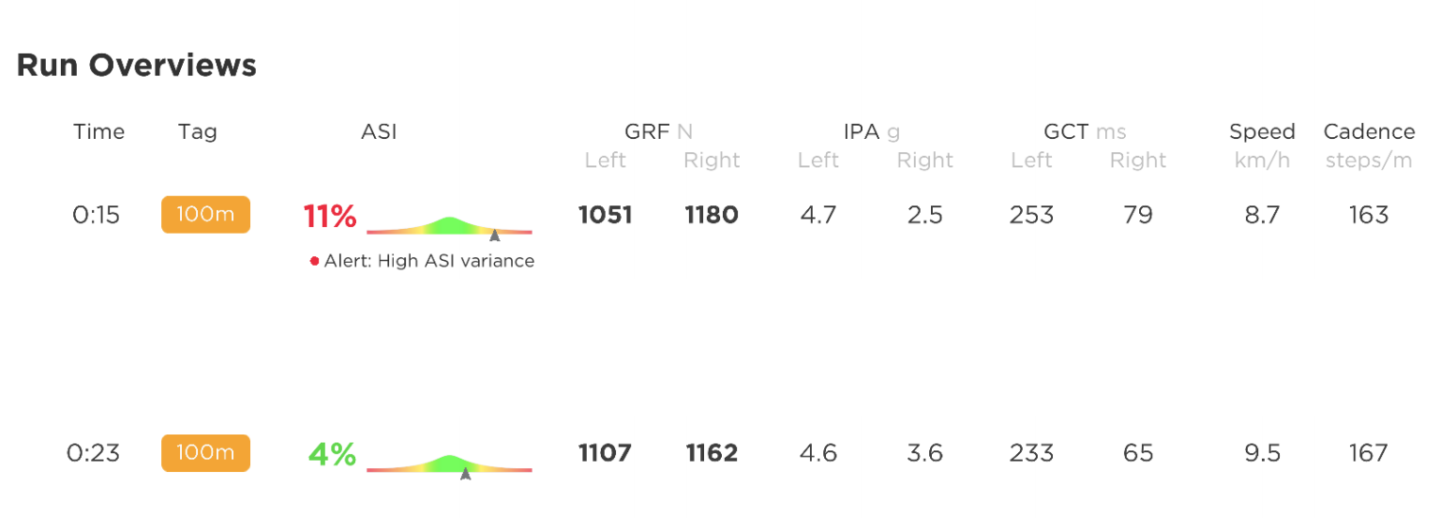
A Summary of the Key DorsaVi ViMove2 Analytics
- My ‘normal’ running illustrates an asymmetry in the stats towards my right (ASI = Absolute Symmetry Index), which perhaps indicates why I am struggling with right knee pain at the moment.
- GRF = Ground Reaction Force (Newtons), which is the force exerted through your tibia as you push off the ground. It increases with body mass and running speed, but can also indicate a lower efficiency of running. My GRF values were higher on the right in both cases shown below (but with less variation in the second example), meaning more force is put through my right leg.
- IPA = Initial Peak Acceleration (g), which is the vertical acceleration through your tibia when your foot lands on the ground. Again it increases with speed, but can also vary depending on whether you are a forefoot or heel striker. My IPA values were higher on the left in both occasions, which can indicate poor control in the landing phase and more of a heel strike on this leg, or this leg is a little more efficient as I’m landing more heavily on my injured leg.
- GCT = Ground Contact Time (ms), which is the time that your foot is in contact with the ground from initial contact to pushing off again. The values in my assessment seem to be wildly different from left to right and Gemma thinks there may have been a problem with the sensor on my right leg, as it should be coming up with a value just under 300ms! Lower GCT is preferable however, as it indicates higher running efficiency.
All of these stats don’t mean much on their own – according to Gemma, the best way to use the DorsaVi technology is in combination with videos of the athlete running. Then the DorsaVi helps to backup what you’re seeing on the video, and show statistical improvements when changes are made.
My videos illustrated the weakness in my glutes and quads which lead to my knees almost touching when I run, and my legs overlapping one another so you can’t see both feet when looking from the back.
You can also see really clearly how much my foot rolls when I land, as I touch down on the outer edge of each foot and then roll inwards. This is much more pronounced on my right leg, but really interestingly the effect was diminished when I ran without shoes. The photos below are taken from slightly different angles, but you can see that my foot lands flatter without trainers on.
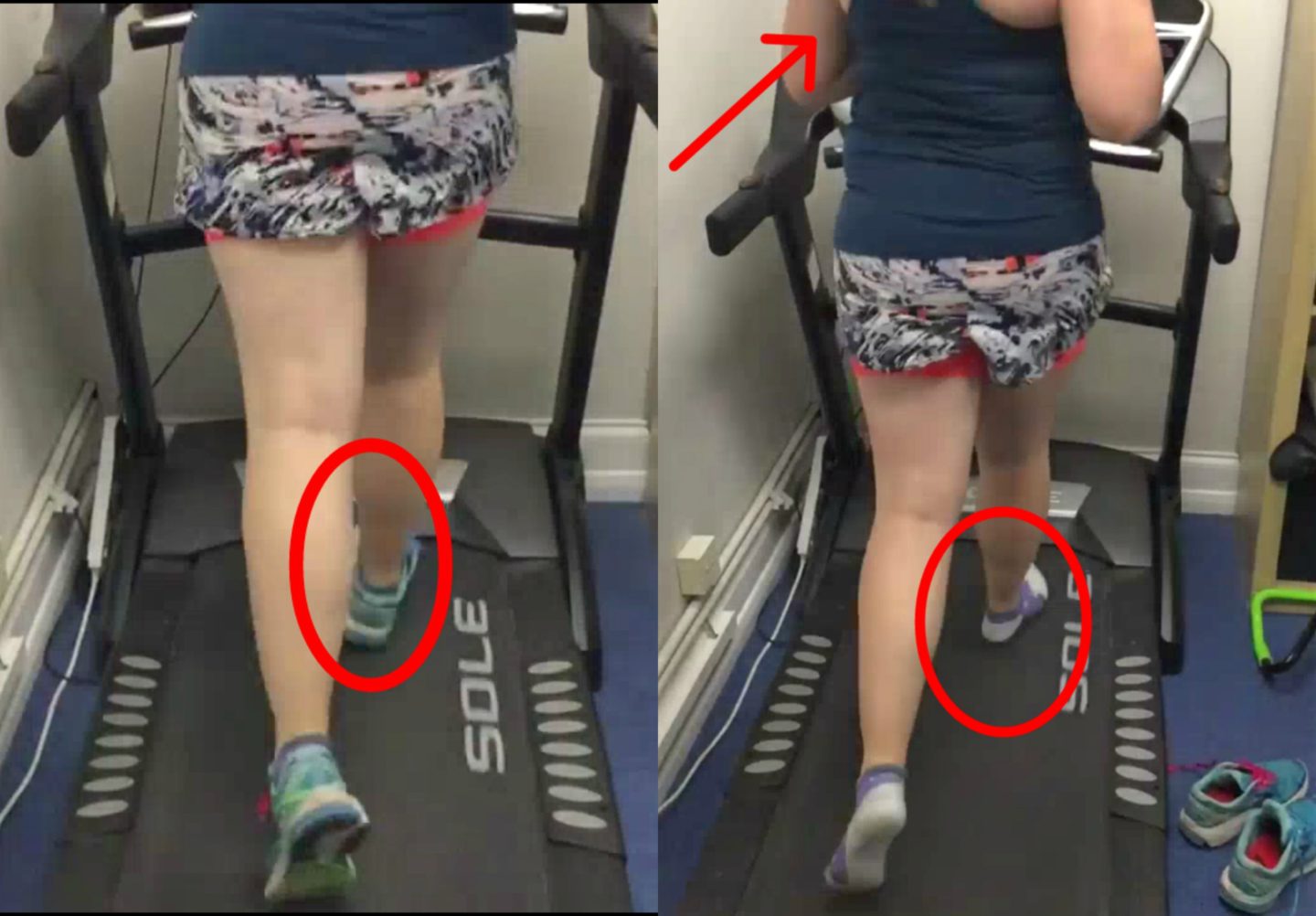
If you’ve managed to take in all of this, well done! It was rather ‘information overload’ when I came away from my appointment, but with a lot of interesting facts to digest. I’ve been given some exercises to strengthen my glutes, work on my hip flexibility so I get a larger range of motion, and hopefully reduce the knee pain I’ve been struggling with.
I’m aiming to go back to the clinic in a couple of months and see if the exercises have made any difference. I’d also be really interested to see how my stats vary when running outside which is where I do pretty much all of my running – the treadmill can make you run more awkwardly if you’re not used to it, even after some time to warm up.
Have you ever had a running assessment?
Beki x
NB: Thanks to the Hemel Running Clinic and DorsaVi for providing me with a complimentary assessment using the new ViMove2 sensors.

